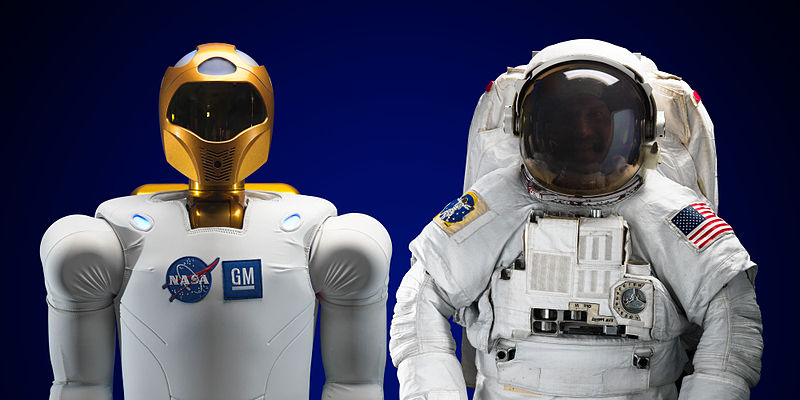
2014 ISS Research and Development Conference, American Astronautical Society
Abstract – Robonaut 2 (R2) has completed its fixed base activities on-board the ISS and is scheduled to receive its climbing legs in early 2014. In its continuing line of firsts, the R2 torso finished up its on-orbit activities on its stanchion with the manipulation of space blanket materials and performed multiple tasks under teleoperation control by IVA astronauts. The successful completion of these two IVA experiments is a key step in Robonaut’s progression towards an EVA capability. Integration with the legs and climbing inside the ISS will provide another important part of the experience that R2 will need prior to performing tasks on the outside of ISS. In support of these on-orbit activities, R2 has been traversing across handrails in simulated zero-g environments and working with EVA tools and equipment on the ground to determine manipulation strategies for an EVA Robonaut. R2 made significant advances in robotic manipulation of deformable materials in space while working with its softgoods task panel. This panel features quarter turn latches that secure a space blanket to the task panel structure. The space blanket covers two cloth cubes that are attached with Velcro to the structure. R2 was able to open and close the latches, pull back the blanket, and remove the cube underneath. R2 simulated cleaning up an EVA worksite as well, by replacing the cube and reattaching the blanket. In order to interact with the softgoods panel, R2 has both autonomously and with a human in the loop identified and localized these deformable objects. Using stereo color cameras, R2 identified characteristic elements on the softgoods panel then extracted the location and orientation of the object in its field of view using stereo disparity and kinematic transforms. R2 used both vision processing and supervisory control to successfully accomplish this important task. Teleoperation is a key capability for Robonaut’s effectiveness as an EVA system. To build proficiency, crew members have attempted increasingly difficult tasks using R2 inside the Station.